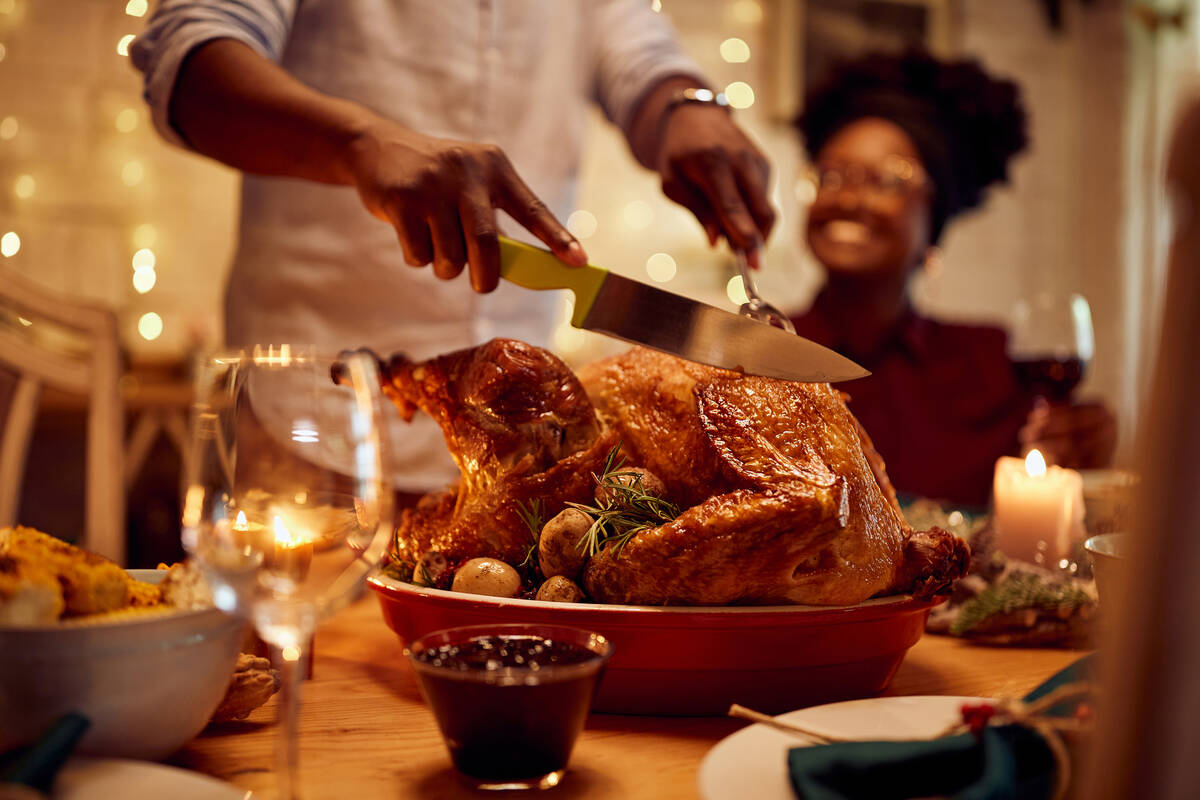This is the healthiest part of the turkey to eat, dietitians say

The Thanksgiving meal is all about enjoying the abundance of food proudly displayed on the table, but if you have been working hard to lose weight, get diabetes under control or maintain or improve your heart health, it can be a bit anxiety-inducing. Perhaps you feel torn between enjoying all the home-cooked favorites you only get to have once a year and maintaining healthy eating habits.
The truth is, it doesn’t have to be all or nothing. You can enjoy healthier versions of your favorite foods or go for the most nutrient-rich parts of it. Take the Thanksgiving headliner, turkey, for example. Full of protein, turkey can be one of the healthiest foods on your plate, but how healthy it actually is depends on how the turkey is cooked and the part of the turkey you’re eating.
We asked registered dietitians about the healthiest (and unhealthiest) parts of the turkey and how to approach the Thanksgiving meal in a mindful way.
Healthiest part of turkey?
When it comes to nutrition, how the turkey is cooked matters. Anika Christ, a registered dietitian at Life Time, says that baking, roasting and grilling are the healthiest ways to cook turkey, while deep frying it is the unhealthiest method.
Registered dietitian Adiana Castro agrees, saying that deep-frying coats the turkey in butter or oil, which are high-calorie, nutrient-poor ingredients. When cooking your turkey, Castro encourages using herbs and spices, which will make it even more nutrient-rich and flavorful.
However, it’s important to consider more than just nutrient density when cooking one of the most beloved parts of Thanksgiving.
“Although some cooking methods are leaner than others, family traditions do come into play,” Castro says. “Some like the smell of oven-roasting turkey filling the air while others like the overall fun that happens with deep-frying a turkey outside. In the end, I would recommend picking the cooking method that works the best for your family for the day.”
If you want to select the healthiest part of the turkey, Elizabeth Huggins, a registered dietitian at Hilton Head Health, recommends going for the turkey breast with the skin removed. This part of the turkey, she says, is lowest in saturated fat and an excellent source of protein.
When it comes to the least healthy parts of the turkey, Castro points to the thighs and wings because they are higher in fat, but she adds that this extra fat gives extra flavor, which is why so many people love them.
That said, Castro told us that gobbling down a turkey thigh isn’t the end of the world in terms of your diet.
“Even though one part of the turkey is technically leaner, there isn’t a particularly huge difference in health value, so the decision comes down to preference, amount and frequency,” she explains.
Huggins agrees, saying, “Both the white meat (from the turkey breast) and the dark meat from the turkey legs contain B vitamins and are an excellent source of iron, selenium, zinc and choline. When you get down to nutrition, skinless dark turkey meat is not dramatically different from skinless white turkey meat. Dark meat is a little higher in total fat, saturated fat and calories.”
Thanksgiving diet anxiety
Perhaps the turkey is the least of your Thanksgiving worries: It’s all your favorite side dishes that you aren’t sure how to approach. Will piling your plate with everything you want to eat completely derail you?
While all three dietitians acknowledge that the Thanksgiving meal can trigger anxiety for those trying to lose weight in a healthy way or maintain healthy eating habits, they encourage approaching the meal as the celebration it is.
“Take a deep breath and enjoy the family, friends and food while remembering to slow down and savor the meal that you’re eating,” Huggins says.
Christ adds: “Holiday meals are celebratory and having a bit of whatever you enjoy is important. The key is not to take the celebratory mindset and continue indulgences beyond the day itself. Get back into your normal routine the next day.”
If you do want to keep your meal nutrient-rich while enjoying your favorite dishes, Castro recommends eating veggie-centered dishes and proteins (like turkey) first before moving on to less nutrient-dense sides.
Huggins recommends occasionally pausing throughout the meal to check in with yourself as a way to gauge how full you are. That way, you’ll stop eating before you feel uncomfortable.
The most important thing is just to have fun.
“Holidays are wonderful traditions, especially Thanksgiving, that carry a lot of food memories that remind you of happy moments with family and friends,” Castro says.
And if you get full before getting to try everything you want, remember, there are always leftovers.